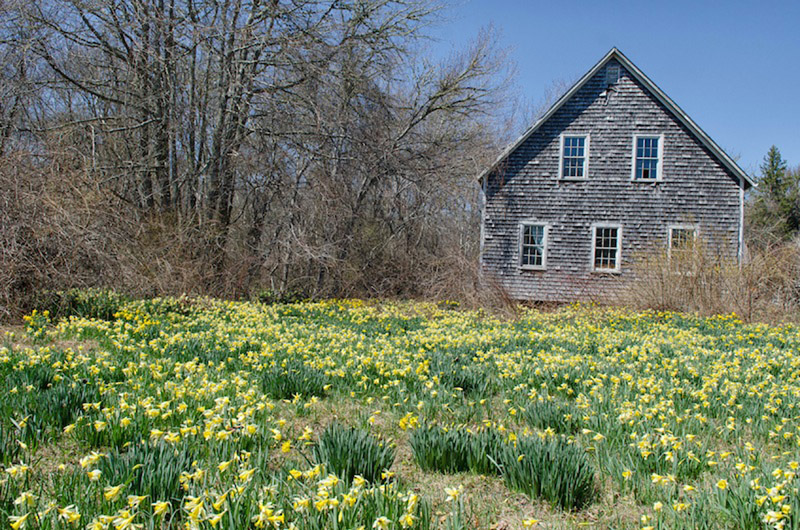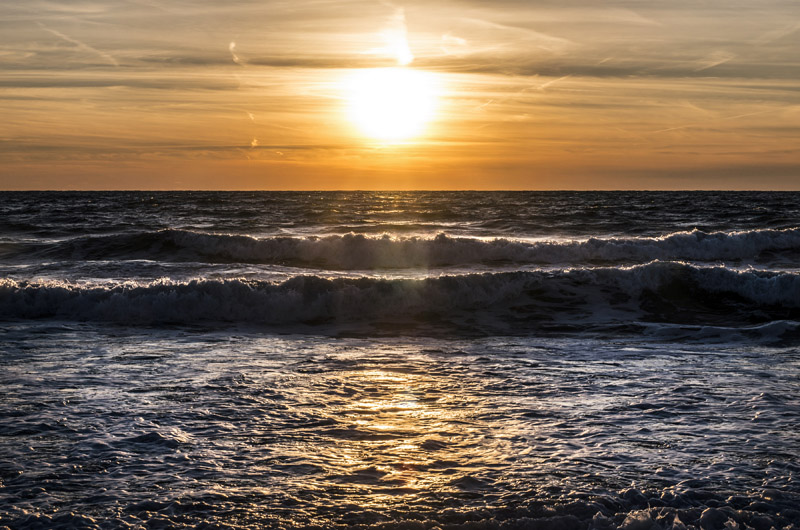Hot enough for you?
The quintessential New England weather cliche is usually reserved for July, or August, not December, with church bells ringing carols through Edgartown, multiple flip-flops observed in a coffee shop, and people hanging out on the Island Home’s weather deck.
Perhaps the National Weather Service forecast of 64 degrees on Christmas day here on Martha’s Vineyard, a full 24 degrees above the historic average, is a fitting way to wind down a year of weather that was just way out of whack. Wacky, even. Good thing Santa’s sleigh flies through the sky, because the ground is decidedly unfrozen this holiday season.
If the forecasters are correct, 64 degrees would shatter the record high temperature for Dec. 25, by six degrees of separation from the previous record of 59 degrees, set only a year ago.
Which illustrates another common weather conversation heard more than once around the Island:
Optimistic, thankful Islander #1: Unbelievable! Shorts in December? What warm weather we’re having.
Jaded, cynical Islander #2: Yeah, but it was like this last year, and look what happened.
What happened, was snow. Heavy snow. Drifting snow. Day after day after day snow. Trapped in the house snow. Ferry, school, and just about everything else cancelled snow.
It was a winter when weather geek vernacular like “polar vortex” and “bombogenesis” crept into conversations in the produce aisle. Where, by March, people desperate for anything tropical were buying coconuts and pineapples.
On Jan. 24, overnight into Jan. 25, a fraction less than three inches of snow fell on the Island. Little did anyone know, soon that would classify as a mere dusting.
About noon on Monday, Jan. 26, a deep ocean storm began to drop snow on the Vineyard. Grocery store shelves began to empty out, hardware stores sold every shovel they had, and people began lining up to wait for gas at local stations.
“They are just getting that madness in their head, I think, coming in and getting tons of gas, like the world is ending,” said manager Terri Hakala at the Edgartown Shell Station.
Some shrugged off the dire forecast, but it turned out those who panicked early made the right decision.
Shortly after dark, the storm was in full blizzard mode with gale force gusts lashing the shoreline. In the early morning hours of Tuesday, winds peaked just short of hurricane force, and visibility wasn’t even worth measuring, as a practical matter. Temperatures dropped to 15 degrees.
The National Weather Service cooperative station in Edgartown officially recorded 20 inches of snow for the two-day storm. Unofficially, but reliably, two observers reported 27 inches in Oak Bluffs. Drifts as high as six feet trapped drivers.
Vineyard Haven residents were incensed when the town department of public works failed to clear streets, some of which remained impassable several days after the snow stopped.
Suzan Bellincampi, director of the Felix Neck Wildlife Sanctuary and a nature columnist for the Gazette, epitomized the plight of storm weary, stir crazy, cabin fever infected Islanders. She tried to calculate the number of snowflakes that fell in the January storm. She used a snowfall amount of 25 inches, on average, over the 100-square-mile Island.
“Do the math and I think we had a quarter of a quintillion flakes (25 followed by 16 zeros),” she wrote in her column. Some residents, especially those wielding snow shovels, could be forgiven for feeling like that much fell on their driveway alone.
In February, round two.
At dawn on Sunday, Feb. 15, another winter blizzard battered the Island. By the time it wound down four days later, another foot of snow had fallen. The storm was followed by bitter cold, dipping below zero briefly on Feb. 16. It wasn’t quite a record.
The National Weather Service cooperative station in Edgartown reported it was one of the lowest recorded temperatures in 32 years.
The frigid weather held steady for several weeks, causing local harbors to freeze over for the first time since 1978. A U.S. Coast Guard ice breaker was called in to clear icebound harbors in Menemsha and Cuttyhunk.
Another brief but intense snowstorm in March brought near-unanimous approval. Enough winter.
With most of the 2015 numbers in, the Vineyard received 54.5 inches of snow this year, well more than double the annual average of 23.6 inches, as measured in Edgartown. The only solace was the empathy Islanders felt for their mainland neighbors. Boston was paralyzed with more than twice as much snow as the Vineyard.
Summer brought welcome relief, a contrast almost as pleasant as the winter was severe.
Visitors who chose July for a Martha’s Vineyard vacation had very little chance of getting wet. There was less than an inch of rainfall for the month. The stretch of hot sunny beach days stretched well into the shoulder season, with a high of 90 degrees on the last day of July, and again on the first day of August. Some shop owners actually groused that an absence of cloudy or rainy weather led too many people to stay at the beach, rather than come into town for shopping. Only two inches of rain fell in August, and a bit more than four inches in September. Almost all the rain in September came in one memorable thunderstorm on Sept. 11, when the heavens opened up and dumped 3.18 inches of rain.
The Island was spared any hurricanes or tropical storms, much to the relief of marine interests and those who pay exorbitant rates for property insurance.
For the year, precipitation has topped a total of 41 inches, with only a few days left in the year.
As they say in the investment world, past performance is no guarantee of future results, but that doesn’t stop the National Weather Service from trying to predict long-range trends for the winter of 2016.
According to the Climate Prediction Center, the northeast region of the United States has about a 45 per cent chance that temperatures will be above normal, and about a 37 per cent chance that precipitation will be below normal. Milder and drier, according to the experts.
Of course, the same meteorologists predicted chances were high that last winter would be warmer than normal, with only a slight chance of more than the usual precipitation.
How did that work out? May be time to consult the woolly caterpillars.










Comments (1)
Comments
Comment policy »